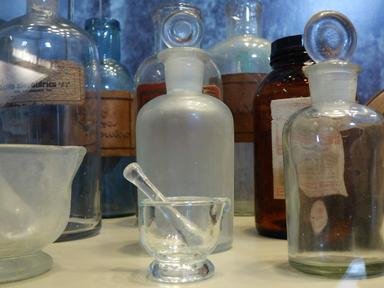Quiz Answer Key and Fun Facts
1. Which radioactive metal with the atomic number of 84, was discovered by Marie Curie and named for her homeland?
2. Ytterby is a small village, but has had a large impact on the periodic table. There are four rare earth elements named after it and several other elements were discovered there. In which country would you find Ytterby?
3. Francium is the second rarest element naturally occurring in the earth's crust.
4. The mineral element Scandium is a silvery-white metal used frequently in an alloy and has which atomic number?
5. Because he placed it directly below silicon on the periodic table, what element did Dmitri Mendeleev predict and name ekasilicon in 1869, 17 years before it was officially discovered by Clemens Winkler?
6. Elements 97 and 98 were named after their place of discovery but not were not discovered at the same time. 98 is Californium. What is element 97?
7. The transuranium element Californium was first synthesized in 1950. Invented in Berkeley, California, what type of particle accelerator, with a 60-inch diameter, was used to create Californium?
8. Lutetium is an element named after the Latin name of which European capital city?
9. Darmstadtium was named for the city where it was first created. Which laboratory first synthesized it?
10. Which element, often found in zirconium minerals, is named for the Latin name for Copenhagen?
Source: Author
pusdoc
This quiz was reviewed by FunTrivia editor
rossian before going online.
Any errors found in FunTrivia content are routinely corrected through our feedback system.
